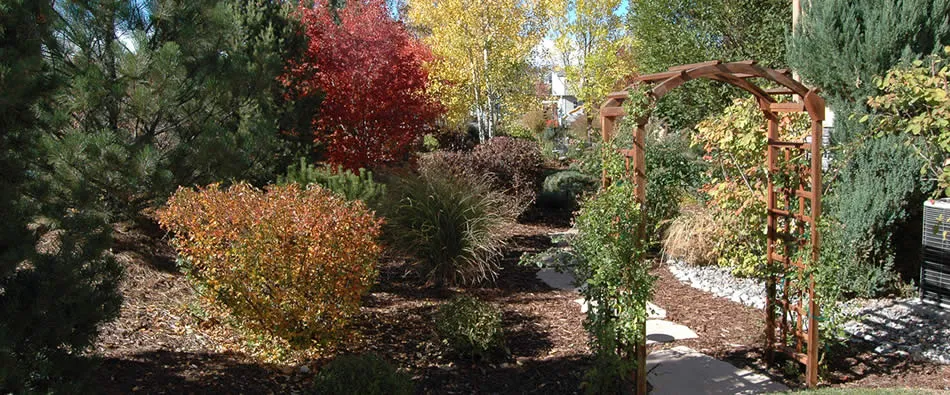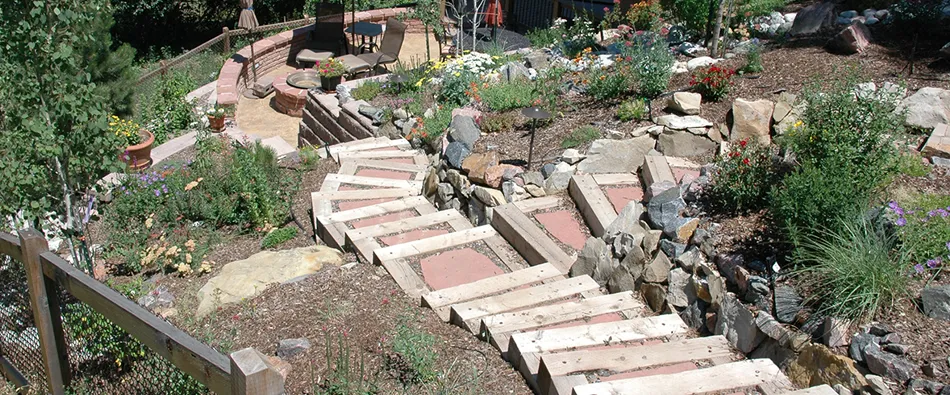Xeriscape landscaping or, simply, "xeriscaping," by definition, is landscaping designed specifically for areas that are susceptible to drought, or for properties where water conservation is practiced. Derived from the Greek xeros meaning "dry," the term means literally "dry landscape."
Xeriscaping may be an alternative to various types of traditional gardening. In some areas, terms such as water-conserving landscapes, drought-tolerant landscaping, and smart scaping are used instead. Xeriscaping (often incorrectly spelled zero-scaping or xeroscaping) is landscaping and gardening that reduces or eliminates the need for supplemental water from irrigation. Xeriscaping is landscaping with slow-growing, drought-tolerant plants to conserve water and establish a waste-efficient landscape.
Landscapes can be designed from the start to reduce the amount of resources needed to maintain them. By selecting the appropriate plants and efficient irrigation systems, a balance can be achieved to fit your aesthetic needs as well as reduce resource use. Benefits of xeriscaping include cost savings through lower water bills and a reduction in the labor needed to maintain your landscape. Designing a resource-efficient landscape requires the incorporation of a few design elements.
• Zoning--grouping plants in the landscape according to their water requirements. For example, water-loving plants should be grouped separately from drought-tolerant plants. This allows for the proper amount of water to be distributed to the plants as they need it.
• Use of drought-tolerant plants--these plants require less water and are adapted to drought conditions and soils with low water-holding capacities.
• Mulch, mulch, mulch--because mulch reduces evaporation, it is used extensively in xeriscaping to replace areas that require extensive watering. Mulch can also be used to create paths or walkways throughout your landscape.
The Xeriscape landscape takes into account the regional and microclimatic conditions of the site, existing vegetation and topographical conditions, the intended use and desires of the owner, and the zoning of plant materials according to their water needs. The landscape plan should allow the landscaping to be phased in, with initial phase installation and a future phasing plan as part of the building package. Such a feature can be important in speculative home construction, and gives added value.
Incorporate existing trees when locating structures and powerlines, allowing room for them to grow if they are not at mature size. (The city’s Land Development Code tree preservation regulations controls commercial and multi-family construction projects. Under these rules, trees with a trunk caliper of 8 inches or more must be included in a tree survey, and trees with a 19-inch caliper or more are considered protected.)
Most Xeriscape plants will need no supplemental watering after an establishment period, unless there is an extreme drought. The establishment period after installation may require from 18 to 24 months. Almost any plant can be used in a Xeriscape landscape if grouped according to its water needs. Annual and exotic plantings can be located in small, easily accessible areas to make maintenance easier. Irrigation can then be zoned according to plant water needs to make efficient irrigation possible.
Many native plants are well adapted to the natural soil and rainfall conditions of our area. They have protection mechanisms that cause them to go dormant during periods of stress. They may appear brown, but will turn green again when temperatures improve and it rains.
Avoid large numbers of only one plant species, which can create a monoculture susceptible to pest or insect problems. (A variety of plant species occurs in nature, making more stable and diverse plant populations.) The abundance of Xeriscape plants – trees, shrubs, perennials, groundcovers, vines and grasses –make it possible to choose plantings which give color and interest (flowers, fruits, berries, and foliage) year-round.






